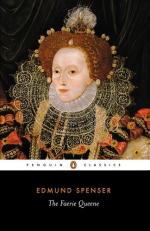The next year while still in London, Spenser collected his early poems and issued them under the title of Complaints. In this volume were the Ruins of Time and the Tears of the Muses, two poems on the indifference shown to literature before 1580, and the remarkable Mother Hubberds Tale, a bitter satire on the army, the court, the church, and politics. His Daphnaida was also published about the same time. On his return to Ireland he gave a charming picture of life at Kilcolman Castle, with an account of his visit to the court, in Colin Clout’s Come Home Again. The story of the long and desperate courtship of his second love, Elizabeth, whom he wedded in 1594, is told in the Amoretti, a sonnet sequence full of passion and tenderness. His rapturous wedding ode, the Epithalamion, which is, by general consent, the most glorious bridal song in our language, and the most perfect of all his poems in its freshness, purity, and passion, was also published in 1595. The next year Spenser was back in London and published the Prothalamion, a lovely ode on the marriage of Lord Worcester’s daughters, and his four Hymns on Love and Beauty, Heavenly Love, and Heavenly Beauty. The first two Hymns are early poems, and the two latter maturer work embodying Petrarch’s philosophy, which teaches that earthly love is a ladder that leads men to the love of God. In this year, 1596, also appeared the last three books of the Faerie Queene, containing the Legends of Friendship, Justice, and Courtesy.
At the height of his fame, happiness, and prosperity, Spenser returned for the last time to Ireland in 1597, and was recommended by the queen for the office of Sheriff of Cork. Surrounded by his beloved wife and children, his domestic life was serene and happy, but in gloomy contrast his public life was stormy and full of anxiety and danger. He was the acknowledged prince of living poets, and was planning the completion of his mighty epic of the private virtues in twelve books, to be followed by twelve more on the civic virtues. The native Irish had steadily withstood his claim to the estate, and continually harassed him with lawsuits. They detested their foreign oppressors and awaited a favorable opportunity to rise. Discord and riot increased on all sides. The ever growing murmurs of discontent gave place to cries




